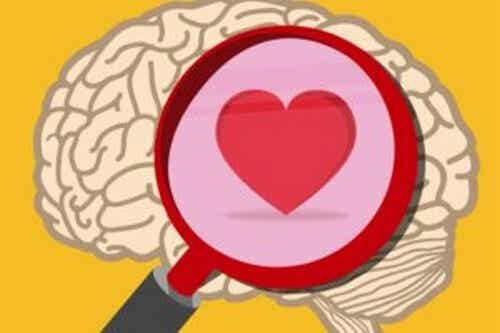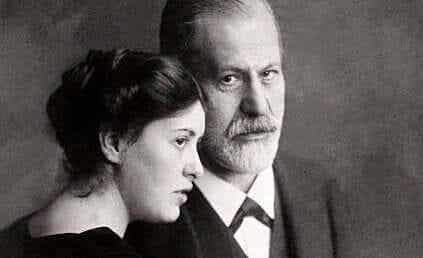Could you distinguish between mood and emotions? They look the same, but in reality they are not. Both have particularities that define how we feel in daily life.

Last update: 24 March, 2022
They look the same, but they are not. State of mind and emotions trace two very similar phenomena, but different at the same time.
The peculiarities of each dimension allow us to better understand our behavior, our mental state and the way we interact with the environment. In fact, what we hear is everything.
We could say that the main distinction between one reality and another is time. Emotions belong to the body and are the first to manifest themselves; they do it very quickly.
Then comes the mental representation, or the feelings. Finally, a more complex phase occurs in which many of these feelings can be combined, leaving us the imprint of a specific state of mind.
As we can guess, it is a sophisticated process that encourages us in one direction or another. On the one hand, psychophysiological reactions to specific stimuli; on the other hand, more generalized reactions that depend on multiple factors that are not always easy to identify.
For example, we may spend a few days in an irritable mood and not really know why. Understanding the difference between mood and emotions will make it easier to manage.
“We experience emotions as they happen to us, not as we chose them”.
-Paolo Ekman–
Differences between mood and emotions
How have you been feeling lately? Dull, without desire for anything and perhaps saddened? Answering this simple question we will already talk about our state of mind.
It is true that emotions color our life, but the mood offers a more stable and persistent tone. Emotion is a punctual brushstroke that arises as a result of a stimulus.
It is always interesting to remember that when it comes to this dimension it is essential to appoint a reference figure in this field.
Psychologist Paul Ekman explained the fundamental differences between these two dimensions in his book The Nature Of Emotion. The first point to keep in mind is that misunderstanding and mishandling them can play tricks on us.
As Daniel Goleman said, emotional self-control is the foundation of all achievement. However, said self-control requires a good understanding of the differences between mood and emotions.
Understanding what happens to us and why will allow us to regulate everything to get what we want at all times. Now let's see the differences between mood and emotions.
1. Purpose: who is who
What is each of these dimensions for? We know that both belong to the territory of the affects and that they determine the well-being or psychic discomfort. Each one, however, fulfills a specific purpose:
- Emotions are meant to facilitate our adaptation to events (stimuli) in the environment. They therefore define an immediate psychophysiological response to a specific stimulus, and they do so by releasing a series of neurotransmitters.
- Mood is a mixture of emotions and feelings accumulated over the course of the days. In other words, a state in which mental, emotional and physical distress or well-being are combined. These multifactorial experiences do not have a purpose, they are rather a temporary reaction to an accumulation of psycho-emotional sensations that we need to understand.
2. Duration: emotions are faster and more fleeting
Paul Ekman points out that emotions are intense sensations, but short, they can last a few seconds or a few minutes.
On the contrary, the moods accompany us for hours and even days. We've all had moments where we felt more demoralized or motivated, full of energy.
In the same way, if we prolong an apathetic or hopeless state of mind for weeks or months, we will speak of an affective disorder (seasonal, depressive such as dysthymia, etc.)
3. Trigger: What causes mood and emotions?
The Christ Church of the University of Canterbury conducted a study to understand the difference between mood and emotions.
The main difference between one aspect and another is represented by the triggers.
The James-Lange theory proposes that the origin of emotions is related to our physiological reactions to stimuli.
For example, when I go to work, I see that the computer does not start. My emotional reaction is tension and behind it, anger or frustration because the measures taken are ineffective.
Now the trigger that shapes the mood is complex and appears over time; it is not immediate.
It combines a specific mental state, a series of emotions that we feel day after day (which accumulate) and also the physical state.
Sometimes, factors such as stress at work, worry, lack of exercise, and an unhealthy diet draw a negative and hopeless state of mind. We all know this reality.
4. How are they regulated?
Emotions are psychophysiological responses. They alter our thoughts, they can cloud our attention, generate muscle tension, stomach pain, etc.
All of these reactions happen very quickly, but the problem is that we can get overwhelmed by them and emit an unbalanced response. For example, saying something disrespectful when we get angry.
To regulate an emotion, the first thing we have to do is not to be instinctively carried away by it without first having analyzed it and made contact with it to understand it.
Because its purpose is simple: to help us adapt better to the environment. If I'm angry, I have to resolve that unfair situation, don't get carried away by it.
However, the states of mind require a more delicate, profound and sustained psychological work. They are like a bottle full of so many ingredients that we have to analyze before it overflows or bursts.
If I feel hopeless, I need to understand what lies behind that state. Perhaps an excess of worry, careless emotions and lifestyle habits that we should change.
Ultimately, it is about looking within to understand, to make changes, to get to know each other better and give us what we need.

























